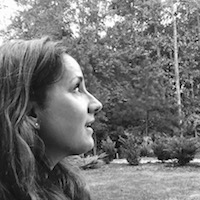It was an ordinary Tuesday last year when I borrowed my husband’s laptop.
What I found on it, however, was far from ordinary.
Have you ever had one of those moments when everything you’ve ever known or thought you’ve known, changes? That’s what happened that day when I discovered that my husband was leading a double life and had been for many years.
So began my descent into grief. It broke me in two. It took me a long time to recover.
And what I learned during that experience is that grief comes in many forms. When someone dies, everyone knows what to do. There are condolences, public ceremonies, even greeting cards.
But what if grief isn’t experienced due to death? What if our Dear One hasn’t departed this earth?
What if grief is instead due to the loss of a loved one who is still living?
I learned that mental health professionals call this “ambiguous grief,” which is loosely defined as “the loss of a meaningful relationship wherein the loved one is still alive, just not as they once were.”
Ambiguous grievers are all around us. We have lost our loved ones to addiction, dementia, mental illness, divorce, abandonment, or in my case, a double life.
For ambiguous grievers, our experience is not publicly recognized. Instead, it is often quiet suffering, a sense that we are experiencing our loss alone. Few around us understand, much less assist.
And while grief is universal, it is not something we like to discuss at a Friday night dinner party. Second only to shame, grief is the least researched human emotion, which is surprising considering it’s also identified as a universal experience found in both humans and animals.
So why aren’t we more fluent in the language of grief and the many forms in which it comes to visit us throughout our lifetime? Why isn’t there some accepted way of acknowledging ambiguous grievers’ experiences?
For me, it felt like being blindfolded in a dark, unknown forest. Nothing was familiar. Confusion reigned.
Since my beloved did not die, I didn’t have the luxury of an immediate and structured grieving period. Our marriage of 20 years died and I was left to grieve not only my present and my future, but a now uncertain past as well.
Without the societal milestones—such as funerals and sympathy cards—we use to heal our grief after the death of a loved one, I was left to chart my own course. I looked for answers through reading, meditation, prayer, and a lot of talk therapy. All of this to help my mind process—and maybe someday understand—why this all happened and how I could heal my life.
I was on a quest for information, looking for “my people,” or someone, (anyone) with guideposts for ambiguous grieving. Yet, nothing provided me with the step-by-step instructions for the healing I so desperately sought. So, I began to pay attention to what soothed my soul, and started to write my own remedy.
I have learned so much. Most importantly, that providing immediate triage for ambiguous grievers is imperative. Without it, we are at risk of sliding down the slippery rabbit hole known as “complicated grief.”
In complicated grief, people become more or less “stuck” in the quicksand of their loss, often unaware they are even there. The loss remains painfully acute years afterward, and grievers often come to identify it as a primary part of their identity, instead of as a life event that is one part of their human experience.
Learning about complicated grief strengthened my resolve to move through my loss, lest I find myself Alice-like, tumbling into that rabbit hole with no hope of finding my way back.
Other things that provided needed guidance were understanding Elizabeth Kübler-Ross’s model of “The 5 Stages of Grief” and Option B, the candid story of loss and resilience by Sheryl Sandberg and Adam Grant.
As helpful as these were, I believe the healing tools for ambiguous grievers differ. We have to create our own ceremonies and rituals to replace those we can’t participate in.
For example, I couldn’t have a funeral for my (once) dear husband, but I did have a funeral for my marriage. Instead of starting a scholarship fund in his memory, I made a contribution to an organization that helped me through my grief. That kind of “tweaking” of the more traditional cultural death milestones proved cathartic, strengthened my resilience, and aided in my growth.
With support, I learned that ambiguous grievers can heal. But first we must identify, acknowledge, and name our grief. This starts by boldly, unabashedly standing in our own truth:
“My son is an addict, living on the streets.”
“My husband lived a double life through most of our marriage.”
“My mother suffers from dementia and doesn’t remember me.”
“I’ve been rejected by my parents because of who I am.”
By living in the truth of our experiences and not lying or covering it up, by not shrinking or isolating, by finding others who share this grief, healing is possible. Looking to the beautiful trees that surround my home, I find a constant message from Mother Nature about the inevitable changes in our life cycles, and hold hope that through this season of death and rebirth, beauty will surely bloom again.
If you or someone you know is dealing with ambiguous grief, check out the 7 Rerooting Tools. It is my hope that the more honest we are about our grief, the more prepared others will be in navigating its gnarled nuances when it comes knocking on our door.
~
Relephant Watch: 5 Mindful Things to Do Each Morning
~
Author: Stephanie Sarazin
Image: Matthew Henry/Unsplash
Editor: Kenni Linden
Copy Editor: Travis May


 Share on bsky
Share on bsky





Read 5 comments and reply